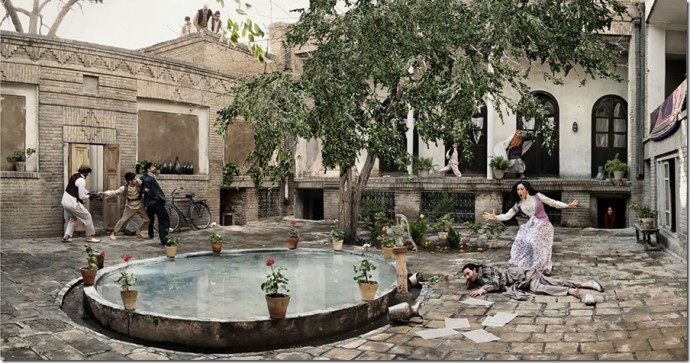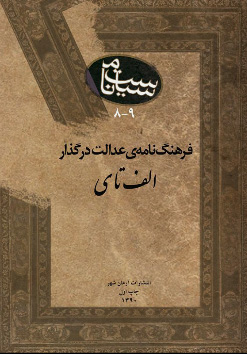By Jason Rezaian, Updated: March 7, 2013 – The Washington Post
TEHRAN- An ambitious photography project that was four years in the making opened to a strong reception in Tehran last week.
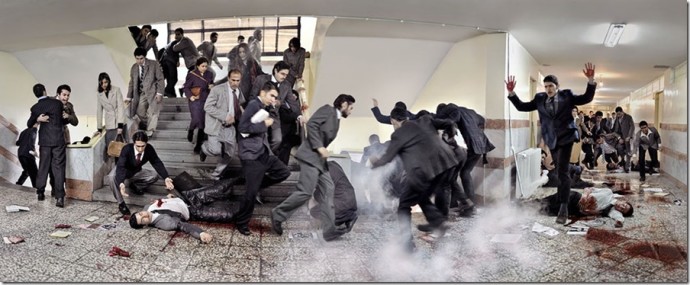
Azadeh Akhlaghi’s “By an Eye Witness” is a unique undertaking in a country that has become known for its rich and diverse documentary photography scene, which draws on a wide range of topics, ethnicities, beliefs and cultural currents as well as Iran’s long and complex history.
In “By an Eye Witness” Akhlaghi provides an experience that accomplishes something increasingly rare in the Islamic Republic, which is unifying Iranians around a common theme, in this case many of the tragic deaths in the country’s modern history.
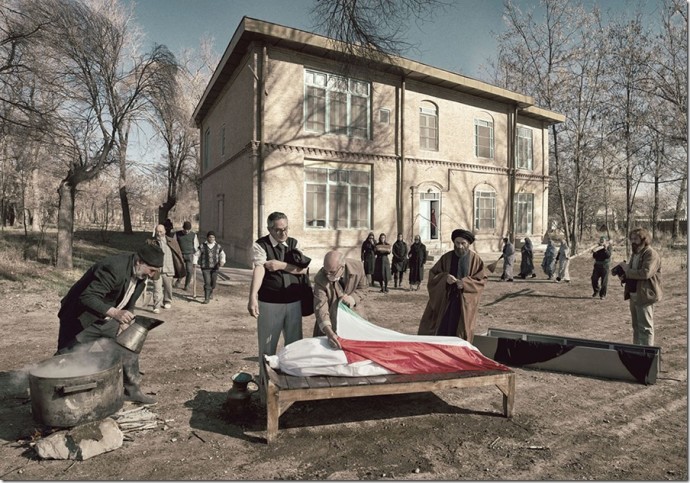
The project is even more compelling in that no photographs of these particular events, or the scenes that surrounded them, were taken at the time. Each image in the series of 19 photos is a re-enactment of an event, painstakingly reconstructed by Akhlaghi, who used a combination of archived information, news reports and in many instances, accounts from witnesses, many of whose recollections differed from one another.
“This project is based on documents,” said Akhlaghi days before the opening, confident that she is presenting as accurate a picture as possible of her nation’s history, given the circumstances.
The result is a powerful work that combines photography and history with a vivid cinematic feel.
Some of the scenes include dozens of actors representing the people who were present at the scene of the deaths. One of those, for example, was a Shiite cleric who happened to preside over the mourning rituals in two deaths that happened nearly 20 years apart. Akhlaghi used the same actor in both shots and he is noticeably older in the latter of the two incidents.
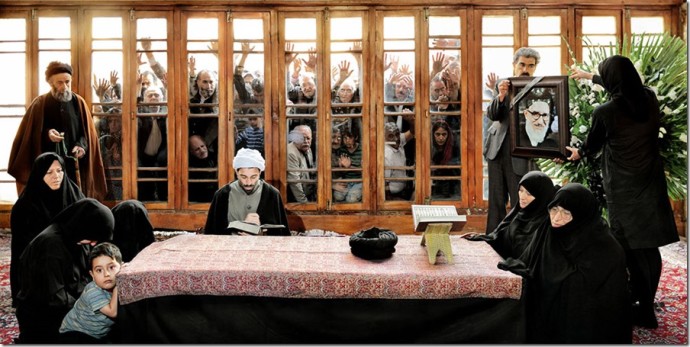
Among the subjects are figures from Iran’s revolution, clerics, leftists, artists and athletes.
Assassinations, tortures, accidents, suspicious deaths and natural ones are all represented in the series, but each of the deaths represents a moment in Iran’s tumultuous modern history, crossing political and factional lines. They are moments to which all Iranians can relate.
As Akhlaghi wrote in a statement about the exhibition, “It is about depiction of the moment of dying of the people who lived decently and passed bitterly, but there is something sacred about their death, which has been forgotten or stained.”
By Iranian standards “By an Eye Witness” was an expensive project to produce, but the Mohsen Gallery, which is the main sponsor, believed deeply in the importance of the project. “There is something that everyone can sympathize with in these works,” said the gallery’s director, Ehsan Rasoulof. He decided to support the project because he believed it would resonate with Iranian audiences. “Is this part of our present, future, or past? I’m not sure,” he said at the opening.
On July 3, 1924, Mirzadeh Eshghi, a prominent poet was killed in his own home by assassins sent to kill him by then-monarch Reza Shah. Azadeh Akhlaghi
Akhlaghi said she was moved that some of the surviving relatives of her subjects attended the opening and that all of them, regardless of their political affiliations, had been supportive of her work.
“One women who came to the opening was crying a lot. I went to her and told her that it was okay, and that I had cried a lot doing this project,” said Akhlaghi, adding that she had to put this project behind her and begin a new one or risk becoming depressed. The original inspiration for “By an Eye Witness,” according to Akhlaghi came in the aftermath of the 2009 election. “I was so shocked by the death of Neda,” referring to the shooting death of Neda Agha Soltan, who was killed during a post-election protest that was captured on cell phone video and broadcast all over the world.
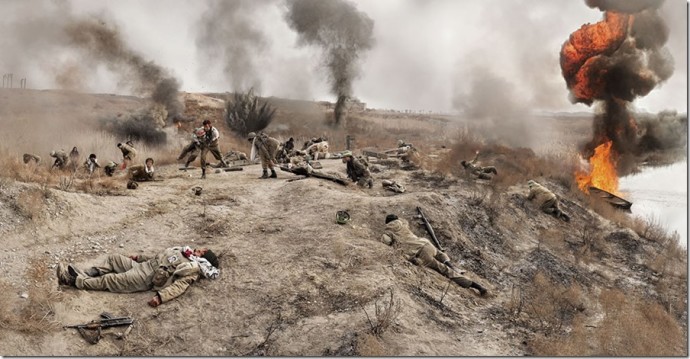 On Valentine’s Day, 1985 Mehdi Bakeri, an army commander died in a battle with Iraqi soldiers along the Tigris River. Before the battle he told his troops, “Even if your commander is killed, do not say that we no longer have any one to command us, do not falter, this is the temptation of the devil!” Azadeh Akhlaghi
On Valentine’s Day, 1985 Mehdi Bakeri, an army commander died in a battle with Iraqi soldiers along the Tigris River. Before the battle he told his troops, “Even if your commander is killed, do not say that we no longer have any one to command us, do not falter, this is the temptation of the devil!” Azadeh Akhlaghi
© The Washington Post Company

